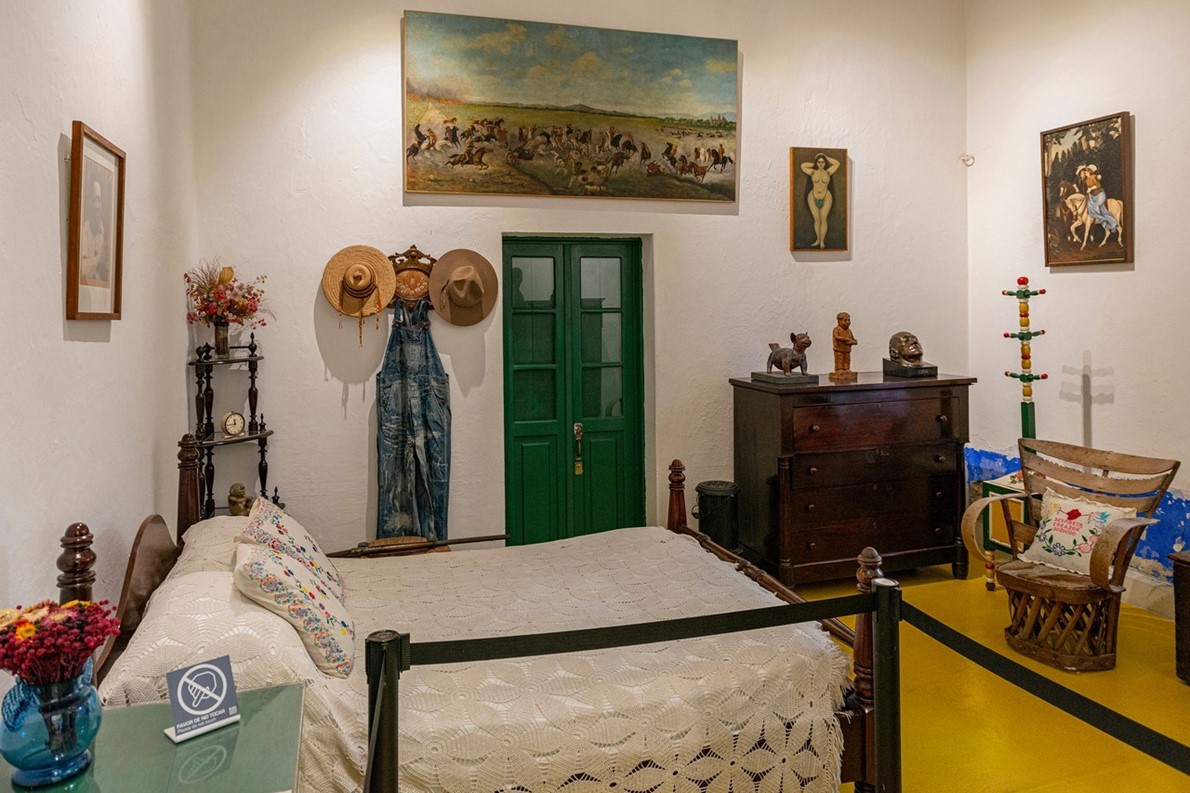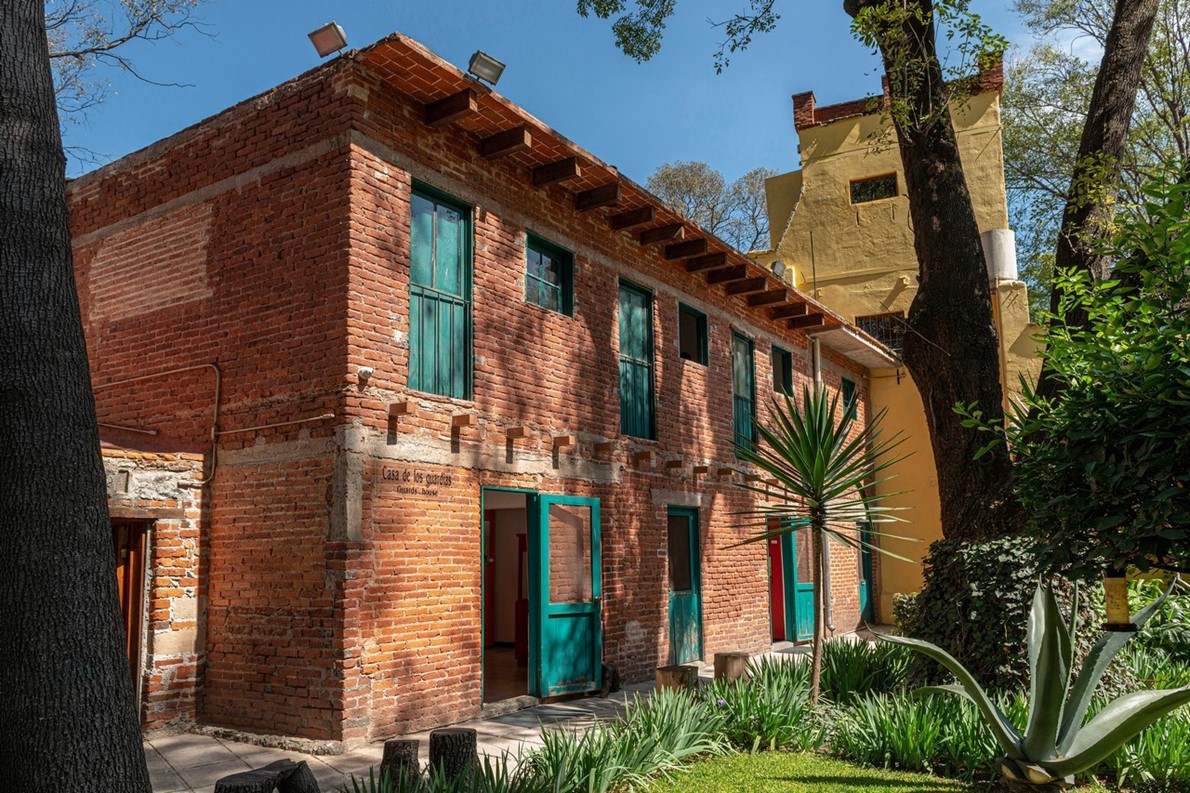Within hours of arriving in
Coyoacán — a leafy, tranquil, beautiful neighborhood in the southwest part of
Mexico City — I was searching the internet for long-term rentals in the area.
It was pure fantasy that my family could move there. It seemed as if my family
and I had found the ideal base for exploring Mexico City, a place I had always
loved. Its sidewalks lined with brightly colored houses and tenderly nurtured
vegetation, Coyoacán is an oasis of tranquility, almost like an island
surrounded by the roiling 24/7 energy of the nation’s vibrant capital.
اضافة اعلان
The neighborhood’s appeal has been obvious
for centuries, long before it was engulfed by Mexico City’s sprawl, in fact
before it was even a village. Conquistador Hernan Cortés is said to have lived
here around 1520 (after the destruction of the Aztec capital), although
obviously not in the 18th century building now known as the Casa de Cortés.
Coyoacán was incorporated into the capital in the 19th century and, in 1928,
designated as a borough.
 The
Casa Azul, where Frida Kahlo spent much of her life, in Mexico City’s Coyoacán
neighborhood.
The
Casa Azul, where Frida Kahlo spent much of her life, in Mexico City’s Coyoacán
neighborhood.
In the early and mid-20th century, Coyoacán
was Mexico City’s Greenwich Village, its Montparnasse. Artists from all over
the world came to visit their Mexican counterparts — and stayed. Much of the
area’s rich history — and its particular magic — has remained and can still be
seen in the houses where these luminaries lived and worked. Perhaps it is
superstitious to feel closer to the dead in the places where they lived, but if
so, it is a superstition shared by a great many people.
Purely by lucky accident, the house we
found on Airbnb was the former studio of painter José Orozco, one of the
founders of the Mexican muralist movement, a group that included Diego Rivera,
David Siqueiros and others. On the walls were framed drawings and prints by
Orozco, who died in 1949, and the bookshelves contained volumes of
reproductions of his art.
House museums draw us out of curiosity about the living conditions and the possessions of a figure we venerate or loathe
Several of the houses where Coyoacán’s
celebrated residents lived have been turned into museums. House museums draw us
out of curiosity about the living conditions and the possessions of a figure we
venerate or loathe. I have seen Fyodor Dostoyevsky’s deck of cards, read the
first drafts of Franklin D. Roosevelt’s Day of Infamy speech, stared down the
field from Virginia Woolf’s writing cottage toward the river where she drowned.
If we believe that ghosts are still inhabiting these structures, we long for
the quiet and solitude that will enable us to hear what they have to say.
Kahlo’s casaBy far the most famous of the
neighborhood’s house museums is the brilliantly bright blue Casa Azul, where
Frida Kahlo spent much of her life and died. In the 1940s and 1950s, she and
Rivera hosted Mexican artists, European surrealists, movie stars, wealthy art
collectors, expats, and political refugees.
When I first visited the house, long before
the film starring Salma Hayek was released, before the world was gripped by
what the Mexicans call Fridamania, which shows no signs of disappearing, I was
the only visitor except for one Canadian backpacker who wept as she moved from
room to room.
Now it is a wildly popular tourist
destination, almost a pilgrimage site, with advanced ticketing and (often) long
waits to get in. You can pause before vitrines containing the elaborate
folkloric costumes the artist wore and visit her somewhat shrine-like bedroom,
but it is hard to feel a personal sense of communion with her in what is less a
re-creation of her home and more of a tribute display, with a gift shop and a
quote from Patti Smith stenciled on one wall, words that could not have been
there when Kahlo and Rivera enjoyed the pretty courtyard.
Frida and Diego would have been pleased by the turnout, the awe, and the attention. Both were ambitious, both deeply concerned with career and reputation.
It is certainly worth braving the crowd,
though, because Kahlo had great collections — most notably, of retablos, or
holy pictures, many representing miraculous rescues. Besides which, you cannot
help thinking that Frida and Diego would have been pleased by the turnout, the
awe, and the attention. Both were ambitious, both deeply concerned with career
and reputation.
Anyone wanting to know more about Rivera’s
ego might schedule a visit to the Museo Anahuacalli, a half-hour cab ride from
the Casa Azul. It is the extraordinary monument that Rivera built to himself
with the help of architect Juan O’Gorman. The structure, which once served as
Rivera’s studio, now houses his collection of pre-Columbian art displayed in
dramatically lit showcases.
Trotsky’s sanctuaryThe Casa Azul is by no means the only house
museum that one can visit for a sense of what Coyoacán was like at another time
— who lived here and what they did, the community they formed. When Soviet
revolutionary Leon Trotsky arrived in Mexico in 1936, he stayed at the Casa
Azul rent-free. Later in his exile he moved to the nearby house on the Avenida
Rio Churubusco, where he was assassinated by an agent of Stalin’s secret
police, and which is now also a museum.
 The
home where Soviet exile Leon Trotsky lived, now a museum in Mexico City’s
Coyoacán neighborhood.
The
home where Soviet exile Leon Trotsky lived, now a museum in Mexico City’s
Coyoacán neighborhood.
Trotsky’s house is a quieter scene than the
Casa Azul. It too has a pleasant courtyard, where the relative peace and
physical space make it easier to imagine the brief period when the
revolutionary — a wanted man in Russia — found sanctuary there. Perhaps its
haunting aura derives from the fact that one can see the desk at which Trotsky
was working, presumably writing his biography of Stalin, when he was killed,
famously with an ice ax, by a Soviet agent.
Grouped around the courtyard, where there
are quarters for the guards assigned to protect Trotsky and hutches in which he
kept his beloved rabbits and chickens, the rooms are pleasant but spartan,
touching in their modesty and simplicity. Adjacent to the house is an
exhibition of photos of Trotsky and his associates, as well as a timeline of
early 20th century Russian and Mexican history. It is instructive to learn
that, at the time Trotsky lived there, his home bordered on fields and farmland
at the very edge of the neighborhood and the city; now, just outside his door,
is a busy highway that one can take to reach the historical center.
Indio’s fortressOn a weekday morning, my family and I were
the only visitors to my favorite of Coyoacán’s house museums, the atmospheric
and magical Casa del Emilio Fernández, who was known as “Indio”. In a lovely
and especially peaceful corner of Coyoacán, the former home of the Mexican
movie star, open only on weekends, seems relatively untouched by tourism and
the passage of time.
It is not hard to imagine the luxury sedans edging the central square on their way to deliver guests to one of Emilio Fernández’s long, astonishing parties.
Constructed of volcanic stone, the
“house-fortress”, which occupies much of a square city block, was designed and
built in 1947 by Fernández, a director and actor who, until his death in 1986,
made more than 120 films and whose impressive physique was said to have been
the model for the Oscar statuette. Born to an Indigenous mother (hence the
nickname), he claimed to have fought in the Mexican Revolution and was exiled
to the US, where he lived in Los Angeles and edged his way into the movie
business, later returning to Mexico.
Built around an enormous courtyard once
used to corral the horses that Fernández used in his films — he often played
cowboys and revolutionaries — the house has immense, cavernous public rooms.
Among the guests at his lavish parties were Kahlo, Rivera, and Marilyn Monroe.
Everywhere are framed photos of Indio’s three wives, and in his former bedroom
there is a photo of Olivia de Havilland. According to our tour guide at the
house, the Hollywood actress rejected Fernández’s advances because he was “too
ugly”. Fernández swore that he would someday have de Havilland “at his feet”,
and when the government agreed to let him name the street beside his house, he
named it Dulce Olivia, or Sweet Olivia, fulfilling his promise — or threat.
These monuments to the past are not the
only reason to visit Coyoacán, which has great food, a huge botanical garden, a
pleasant zocalo, and markets for food and crafts. Here, as in so much of
Mexico, the past and present exist side by side. On a quiet Sunday afternoon,
in the Jardín Centenario, a band was playing for a few middle-age and older
couples dancing a sort of dignified salsa-fox trot. Their families sat around,
drinking coffee, eating cups of elote, or roasted corn; the children were
sucking on spicy lollipops. There is still not much traffic, and it is not hard
to imagine the luxury sedans edging the central square on their way to deliver
guests to one of Emilio Fernández’s long, astonishing parties.
Read more Travel
Jordan News







